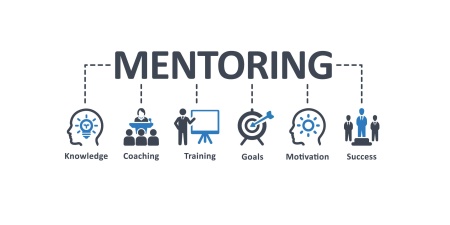Throughout the pandemic, some companies have thrived, while others have struggled; but one thing is certain, the case for a better user experience has been given a shot in the arm.
Outside sales teams have become inside sales teams; and customers that continue to work remote will help to keep it that way.
Whether or not it’s logical that your business transact online, prospects expect to find the information they need on your website – without your help. The ability to advance the sales process toward, and perhaps including, completing an online transaction is now a requirement.
People Want E-commerce/Online Options
The big e-commerce sites have a huge advantage when it comes to delivering a great user experience. They have access to the best technology and an endless sea of developers. However, that doesn’t mean that you shouldn’t try to put your best foot virtually forward.
While the likes of Amazon are reaping the largest gains from this phenomenon, they are not capturing 100% of the increased ecommerce activity.
People are looking for alternatives. If you are a gas and welding supply distributor, their customer, their supplier, or someone like you and me that want choice; recognize that as the pie gets bigger, the crumbs get bigger – and those crumbs are getting pretty big.
Google Trends, one of my favorite data sources for recognizing change, shows that as the pandemic took hold in March 2020 and people were forced to buy more online, a small, but growing portion of those people searched for alternatives to Amazon. In fact, that number has grown in nine of the past ten years.
Website User Experience – The Bar Has Been Raised
While consumers demand choice, most of us are not tolerant of a poor user experience. We use websites and apps in every aspect of our lives – checking the weather, getting news, buying groceries, and watching TV. We all know a good interface from a bad one, and the worst are tossed aside never to be used again.
As an example, I recently regretted the purchase of an LG TV because I couldn’t add my favorite apps like HBO Max.
My solution was to buy an Apple TV and completely bypass the LG interface. Because of LG’s failure to meet my expectations, they’ve lost the ability to monetize my TV experience through the showing of ads, purchasing of movies and subscriptions to different services.
Before the pandemic, many of us had learned to live with flaws in our own site’s user experience. Broken links, clumsy navigation, inadequate content and features that didn’t quite work were common.
Today, these deficiencies are not okay. They are literally deal breakers. Prospects rely on your website to describe your offering in enough detail, to allow them to make the decision to either place an order or reach out via live chat, a completed form, or by phone.
To avoid death by back button consider these tips:
1. Eliminate movement that doesn’t convey a key
messag
After nearly 20 years building websites, I believe that many developers build things because they know how to build them rather than because those elements are helpful to the mission of the company.
Rotating banners are a great example. More often than not, a company’s banner is set to rotate every 5 or so seconds. This causes confusion when they rotate too fast, pull a user’s attention away from key navigation paths, or send mixed messages about what you do.
If used, make sure they support the buyer’s journey.
2. Host a fast loading website.
Do you remember those old Heinz ketchup commercials where consumers struggle to get ketchup out of the bottle as Carly Simon’s song “Anticipation” plays in the background?
While that famous commercial sold lots of ketchup, I can guarantee you that a slow loading website WILL NOT sell more widgets!
Today, especially when it comes to mobile devices, your website needs to load fast. Use Google’s PageSpeed Insights to see if your website is too slow.
3. Don’t over use pop-ups, flyins and pop-unders.
Anyone that reads news on their phone has experienced the growing number of overlays that obscure content with distracting messages. These ads or invitations to subscribe are so annoying that I won’t read articles by certain outlets – it’s too much work.
My advice is that these pop-wherever tools can be effective, but use them with caution; and track their impact on your website’s overall conversion rate.
4. Fix broken links – 404 Errors.
Have you clicked on a link and ended up on a page that says something like “Oops, page not found?” When this happens, it’s generally because the developer coding the link made a mistake, or because the page no longer exists. This is called a 404 error.
To see if your website has any broken links, which you should do quarterly, use Link Integrity, a free downloadable tool.
5. Limit the use of stock photos
Photography can be expensive, but nothing screams phony like too many beautiful people.
Instead of your typical stock photography, either create your own images or when searching for images to buy, search for “real people.”
6. Small chunks of text.
I once worked with a smart guy, but when he put his thoughts to “paper” it looked like one big blob of text – unreadable.
Text should be broken down into bite size pieces with bold headings, bulleted or numbered lists and one to three sentences per paragraph max.
7. Responsive design.
Website content needs to scale to the size of the consumers’ screen. It should look appealing on both large desktop monitors and small mobile devices.
The accepted way to do this is by using responsive web design. To tell if your website is responsive, grab the lower right side of your browser window and drag it to the left to make it narrower.
As you do this, you should see content being rearranged. Navigation will begin to wrap and then turn into the familiar hamburger (that small icon made up of 3-4 horizontal stacked lines). Similarly, images and blocks of text will begin to stack from top to bottom.
Summary
The pandemic has raised our expectations for online user experience. We want intuitive and easy to use, and the ability to find what we want without human interaction.
The big players in any industry, and ecommerce in general, have the advantage of deep pockets. This makes it easier for them to earn our loyalty. Still though, people want choice and as the ecommerce (online in general) pie gets bigger, there is more opportunity for the rest of us.
Your job is to focus hard on improving your website’s user experience. Following the above tips and studying your website’s performance data is a must.
As always, if I can help, please reach out.









